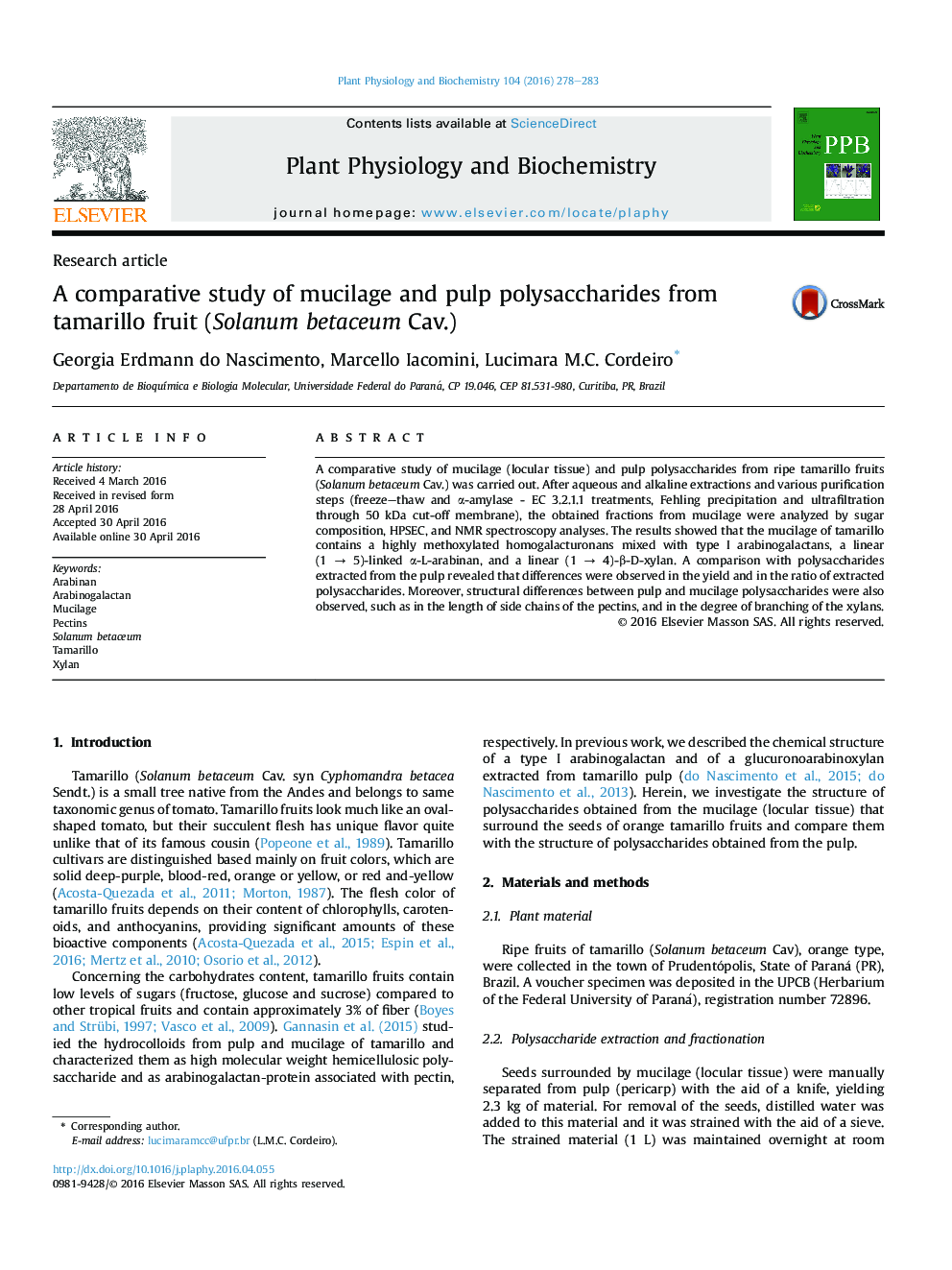| Article ID | Journal | Published Year | Pages | File Type |
|---|---|---|---|---|
| 2014773 | Plant Physiology and Biochemistry | 2016 | 6 Pages |
•Polysaccharides from mucilage of tamarillo fruits were obtained.•Homogalacturonan, arabinogalactan, arabinan, and linear (1 → 4)-β-D-xylan were found•Comparison with those polysaccharides from pulp was performed.•Structural differences between mucilage and pulp polysaccharides were observed.
A comparative study of mucilage (locular tissue) and pulp polysaccharides from ripe tamarillo fruits (Solanum betaceum Cav.) was carried out. After aqueous and alkaline extractions and various purification steps (freeze–thaw and α-amylase - EC 3.2.1.1 treatments, Fehling precipitation and ultrafiltration through 50 kDa cut-off membrane), the obtained fractions from mucilage were analyzed by sugar composition, HPSEC, and NMR spectroscopy analyses. The results showed that the mucilage of tamarillo contains a highly methoxylated homogalacturonans mixed with type I arabinogalactans, a linear (1 → 5)-linked α-L-arabinan, and a linear (1 → 4)-β-D-xylan. A comparison with polysaccharides extracted from the pulp revealed that differences were observed in the yield and in the ratio of extracted polysaccharides. Moreover, structural differences between pulp and mucilage polysaccharides were also observed, such as in the length of side chains of the pectins, and in the degree of branching of the xylans.
